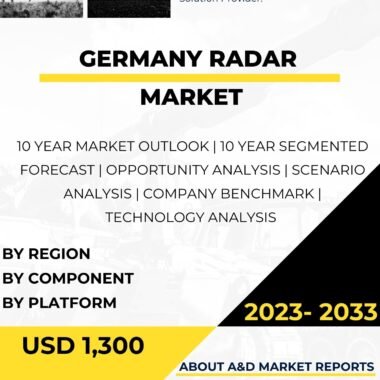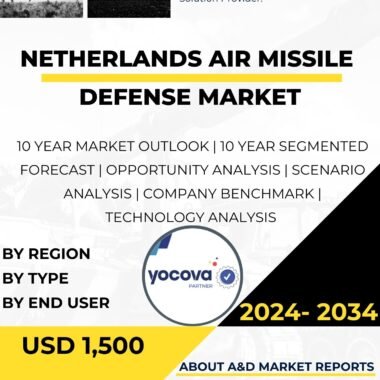Description
Radar technology has played a vital role in shaping Canada’s surveillance and security capabilities. From early radar systems developed during World War II to modern, sophisticated installations, Canada’s radar network has evolved to meet the challenges of the 21st century. Radar’s ability to detect and track objects, such as aircraft, ships, and weather phenomena, has been instrumental in safeguarding Canada’s borders, supporting military operations, and aiding in disaster response efforts.
Canada’s journey into radar technology began during World War II, when the threat of enemy aircraft and submarines necessitated advanced early warning systems. The British and Canadian governments collaborated on the development of the “British Chain Home” radar system, which provided crucial coastal surveillance and helped protect Canada from potential attacks. This early experience laid the foundation for Canada’s subsequent advancements in radar technology and its recognition of radar’s significance in national defense.
After the war, Canada continued to invest in radar research and development, leading to the establishment of the Defence Research Telecommunications Establishment (DRTE) in 1947. DRTE became a hub for radar research and played a key role in advancing radar technology for military and civilian applications. The development of over-the-horizon radar systems, such as the “Line 318” system, further expanded Canada’s ability to monitor its vast territory and maritime approaches effectively.
Throughout the Cold War, radar technology continued to be a cornerstone of Canada’s defense strategy. The Distant Early Warning (DEW) Line, a joint Canada-U.S. project, was established in the Arctic to detect potential Soviet bombers approaching North America. The DEW Line represented a significant technical achievement and underscored Canada’s commitment to collective security with its allies.
As technology progressed, phased array radar systems were introduced, enabling more rapid and precise scanning of the skies. The North Warning System (NWS), a modernized radar network, replaced the DEW Line in the late 1980s, providing enhanced surveillance capabilities over Canada’s northern regions. The NWS remains vital for monitoring aerospace activity and ensuring early detection of potential threats in the Arctic.
Canada’s radar capabilities are not limited to military applications. The country has also leveraged radar technology for civilian purposes, including air traffic control, weather monitoring, and maritime surveillance. Air traffic control radars ensure safe and efficient management of the country’s airspace, while weather radars provide critical data for forecasting and disaster preparedness.
Canada’s extensive coastline demands robust maritime surveillance capabilities. Coastal radars, such as the National Automatic Identification System (NAIS), have been deployed to monitor vessel movements, detect illegal activities, and protect marine environments. Radar also assists in search and rescue operations, helping to locate distressed vessels or individuals in perilous situations.
With the advancement of technology, radar systems have become more sophisticated and versatile. Active electronically scanned array (AESA) radars, for instance, offer increased agility and reduced vulnerability, making them valuable assets in modern combat scenarios. AESA radars are featured in Canada’s next-generation fighter aircraft, demonstrating the country’s commitment to maintaining cutting-edge military capabilities.
Canada’s participation in multinational defense initiatives has further reinforced its radar capabilities. As a member of the North Atlantic Treaty Organization (NATO), Canada contributes to the alliance’s integrated air and missile defense systems. Information-sharing agreements and collaborative research and development efforts have enhanced Canada’s radar network’s interoperability and contributed to collective security.
However, challenges persist in maintaining and expanding radar capabilities. The vastness of Canada’s territory, particularly in the Arctic regions, poses logistical and operational hurdles for radar installations. Harsh environmental conditions and remote locations necessitate specialized maintenance and operational practices.
Furthermore, evolving threats, such as stealth technologies, present a continuous need for radar system upgrades and countermeasures. Research and investment in radar signal processing, data fusion, and artificial intelligence are essential to stay ahead of emerging threats and maintain situational awareness in dynamic operational environments.
As Canada continues to address these challenges, the integration of radar technology with other sensor systems, such as satellites and unmanned aerial vehicles (UAVs), holds immense potential. Data fusion from multiple sources can create a comprehensive and real-time picture of the operating environment, enabling more effective decision-making and response planning.
In conclusion, radar technology has been an integral component of Canada’s surveillance and security capabilities. From its early roots in World War II to the modern, versatile systems of today, radar has played a critical role in safeguarding Canada’s airspace, maritime boundaries, and national security interests. Canada’s ongoing commitment to advancing radar technology and its integration with other cutting-edge sensor systems ensures that the nation remains well-equipped to address emerging threats and contribute to global security efforts.




